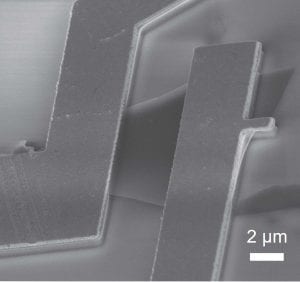Interacting Bosonic Excitations in Quantum Materials
 Solid-state materials host a myriad of emergent elementary excitations that determines their electronic, optical, magnetic, and thermal properties, such as electron-hole pairs (excitons), quantized atomic vibrations (phonons), quantized spin oscillations (magnons), and their hybridizations with light (polaritons). Understanding and manipulating these excitations help us to control the flow of classical energy and quantum information in advanced material applications from atomic-scale electronics to global power supply. Interacting bosonic excitations and electrons also help to create new phases of matter like superconductivity, ferroelectricity and magnetic orders. We experimentally study the interaction of coherent excitations in quantum materials with optical spectroscopy to help developing the next-generation information infrastructure.
Solid-state materials host a myriad of emergent elementary excitations that determines their electronic, optical, magnetic, and thermal properties, such as electron-hole pairs (excitons), quantized atomic vibrations (phonons), quantized spin oscillations (magnons), and their hybridizations with light (polaritons). Understanding and manipulating these excitations help us to control the flow of classical energy and quantum information in advanced material applications from atomic-scale electronics to global power supply. Interacting bosonic excitations and electrons also help to create new phases of matter like superconductivity, ferroelectricity and magnetic orders. We experimentally study the interaction of coherent excitations in quantum materials with optical spectroscopy to help developing the next-generation information infrastructure.
Ultrafast and Nonlinear Microscopy-Spectroscopy
 The color of light is more than just aesthetic. Electromagnetic waves with frequencies spanning from terahertz (THz, far-infrared) to petahertz (PHz, extreme-ultraviolet) are capable of selectively probing and steering the motion of electrons and atoms at vastly different energy and time scale. The evolution of each particle after multi-particle collisions can be tracked by multiple light pulses through time- and frequency-dependent nonlinear mixing. These trajectories allow us to precisely determine the coupling strength between each pair of components in complex materials. We apply the state-of-the-art light sources to characterize new materials with Heisenberg-limited spatial and temporal resolution, and reveal ways to boost the materials’ functionalities by altering them in extreme conditions.
The color of light is more than just aesthetic. Electromagnetic waves with frequencies spanning from terahertz (THz, far-infrared) to petahertz (PHz, extreme-ultraviolet) are capable of selectively probing and steering the motion of electrons and atoms at vastly different energy and time scale. The evolution of each particle after multi-particle collisions can be tracked by multiple light pulses through time- and frequency-dependent nonlinear mixing. These trajectories allow us to precisely determine the coupling strength between each pair of components in complex materials. We apply the state-of-the-art light sources to characterize new materials with Heisenberg-limited spatial and temporal resolution, and reveal ways to boost the materials’ functionalities by altering them in extreme conditions.
Electro- and Photo-mechanical Materials and Devices
 Micro-electromechanical systems (MEMS) are ubiquitous in modern life: cell phones, cars, anywhere we need to precisely detect and control mechanical movements. Similar to the scaling law in electronics, micro-opto-electro-mechanical systems (MOEMS) have experienced tremendous reduction of cost and power consumption, as well as increasing multiplexing capabilities due to the introduction of new materials and design principles. We study the photomechanics and electromechanics of nanomaterials in compact and flexible sensors and actuators for the Internet of Things (IoT) and biomedical applications.
Micro-electromechanical systems (MEMS) are ubiquitous in modern life: cell phones, cars, anywhere we need to precisely detect and control mechanical movements. Similar to the scaling law in electronics, micro-opto-electro-mechanical systems (MOEMS) have experienced tremendous reduction of cost and power consumption, as well as increasing multiplexing capabilities due to the introduction of new materials and design principles. We study the photomechanics and electromechanics of nanomaterials in compact and flexible sensors and actuators for the Internet of Things (IoT) and biomedical applications.
